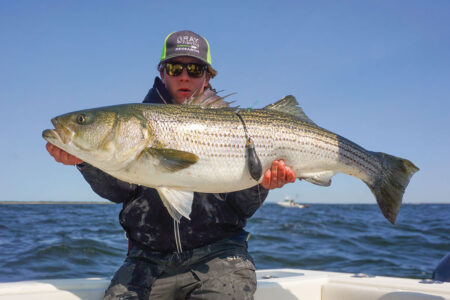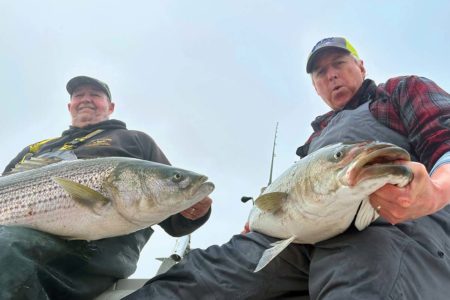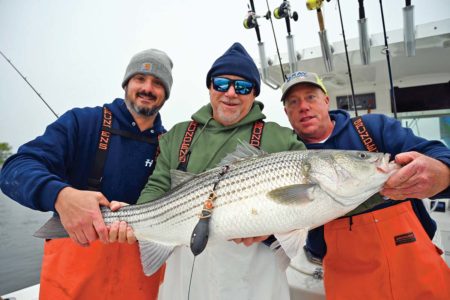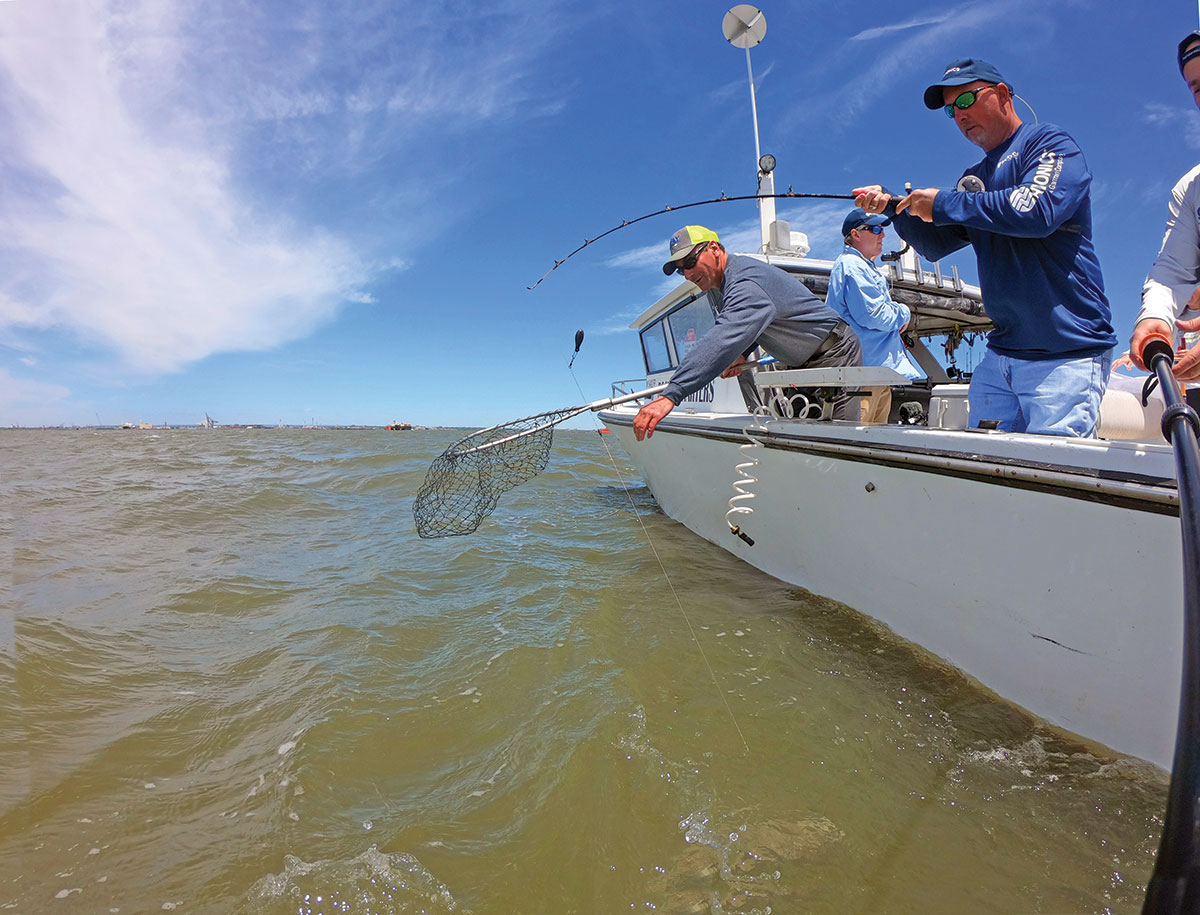
The second tag is in with full results to be revealed in late December.
“Having a MiniPAT tag physically returned is a little like finding the proverbial needle in a haystack; of course, with all the secrets contained inside that watertight globe, it could be more like the genie in a bottle.”
That was the way it was described in the November edition of The Fisherman – how the Wildlife Computer MiniPAT tag deployed in a 34-inch striped bass named Liberty back on May 21 was ultimately found washed up along Sagamore Beach, MA by a woman simply walking the shoreline.
Programmed to “pop off” on October 21, the $5,000 MiniPAT satellite tags are designed to float towards the surface where researchers hope they’ll “ping” data to the orbiting Argo satellite well overhead. But again, actually retrieving one of these tags from a vast ocean is pretty much one in a million.
Make it two.
On October 22, just 4 days after disengaging from a 42-inch striped bass named Freedom – also caught and tagged in the lower Hudson River on May 21 – the second Wildlife Computer MiniPAT device washed up along the beach at Loch Arbour in New Jersey, a tiny seaside town of approximately 200 residents located just across the border north of Asbury Park. The tag’s first transmission to the Argo satellite came approximately 14 miles northeast of there – roughly 8-1/2 miles due east of Sea Bright, NJ – on October 18, 151 days after being tagged and named by the team from Gray FishTag Research, Navionics and The Fisherman.
Liberty & Freedom
The Northeast Striped Bass Study was coordinated just three days after May’s “flower moon” to coincide with the movement of post-spawn stripers out of the Hudson River around the time of that full moon. The first large striper to get fixed with a satellite tag, Liberty, was caught aboard Rocket Charters out of New York City on the East River with Capt. Paul Risi. As per the information collected in Liberty’s tag – which popped free prematurely on July 9 – the 34-incher made a quick trip down the Jersey Shore before heading northeast along the south shore of Long Island around Memorial Day. Soon after, she meandered along in a south/southeasterly direction, spending most of June in parts of Ryan, Nantucket and Clipper canyons, cruising mostly in the 40- to 80-foot depths.
The second tagged fish, Freedom, was caught a little to the west of the first fish, not far from the Statue of Liberty aboard the charter boat Fin Chasers with Capt. Frank Wagenhoffer. The timing and location of the catch, tag and release project was planned around the end of the Hudson River spawning in hopes of capturing a pair of post-spawn bass; at 42 inches in length, Freedom was precisely the fish we were looking for! Before the year is out, the Northeast Striped Bass Study team should know more about her various travels in the 21 weeks that she carried that tag around, from the time she dropped from the Hudson in the spring, until her return to the Jersey Shore during the fall run.
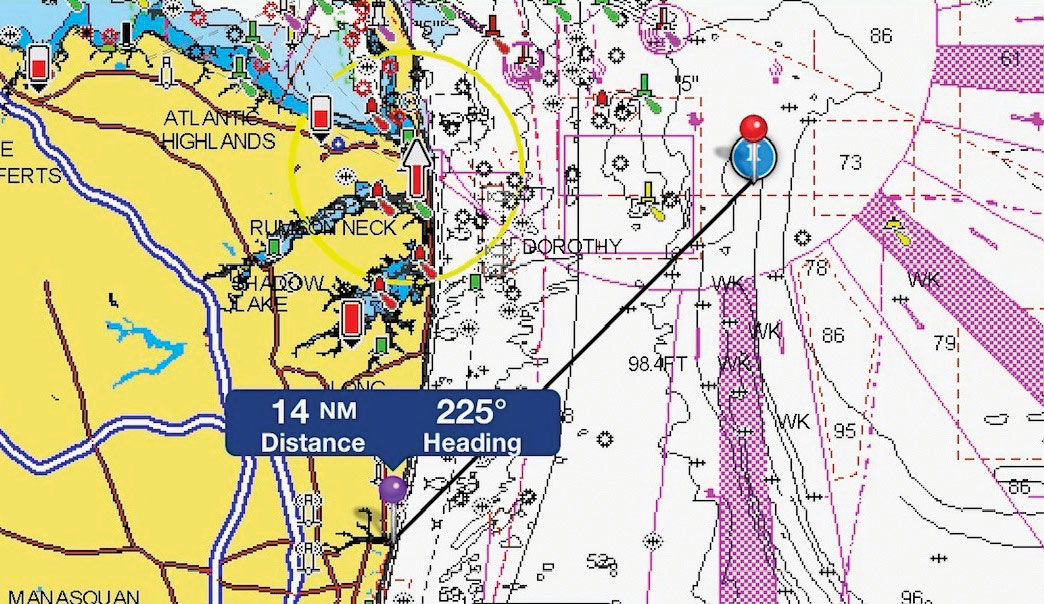
“They have no question, the tag stayed on the fish for duration,” said Gray FishTag’s Bill Dobbelaer in a follow-up conference call with researchers in early November. While the team from Wildlife Computers has been busy poring through the data inside Freedom’s tag; getting the actual tag back with all that information stored allows the researchers to ultimately release their findings with great certainty and a very small margin of error, but the findings need to be completely analyzed before being released to the public.
We expect to have that information presented in time for the January edition of The Fisherman Magazine.
Striper Study Essentials
The high-tech tags used in the Northeast Striped Bass Study incorporate light-based geolocation for tracking, time-at-depth histograms for measuring diving behavior, and a profile of depth and temperature. In the case of Liberty, the data stored inside her MiniPAT tag show that at no time between May 21 and July 9 did the tag ever lose all three components of light, temperature and depth. Folks have questioned whether a larger predator like a white shark consumed the fish before making a beeline offshore; yet the data stored inside that first tag proves that Liberty was alive and swimming the entire time that the tag was affixed to her dorsal.
“Based upon the three types of data collected this information has shown and we were able to collaboratively state with great certainty that Liberty has traveled over 300 miles (straight line) from New York in an eight-week period spending most of the time in offshore waters following the contour edge of the continental shelf in the Northeast, also known as the canyons,” Dobbelaer said earlier this year.
Since Liberty’s tag came undone prematurely, there was only a couple of months of data to compile and the effort went quickly enough to share in November. Freedom on the other hand will take a bit more time to check, cross-check and double-check based on running the full 21 weeks with the tag affixed to her dorsal fin. The staggering news is that we know where she was on May 21, but we also know where that tag came free on October 18 following a full summer of travel.
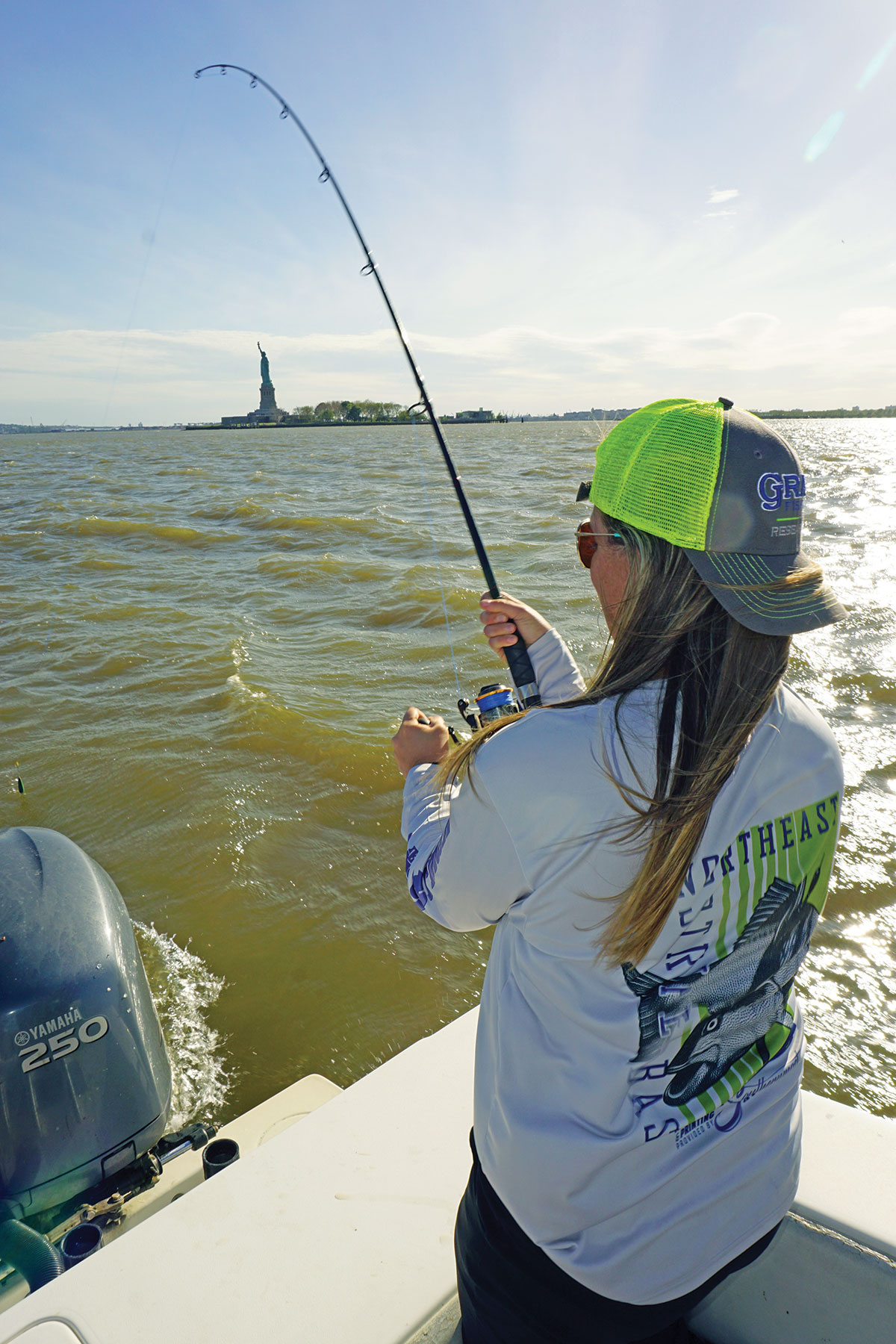
“How’s it possible that this is probably the most controversial fishery on earth, yet no one has ever done this type of extensive research,” Dobbelaer said by phone in November as the team discussed plans to eventually release the findings. As we discussed the various routes she could have taken, and wondered aloud if Freedom had indeed followed Liberty to the canyon grounds, Dobbelaer snapped us all back to reality; first we have to wait for the research to be compiled, and second we have to remember that these are still just two satellite tags.
But of course, now we have tags from two different fish, and quite literally a million points of data for researchers to comb through. It’s our hope that by the time January rolls around, we’ll be letting Freedom ring in the New Year with her complete travel log from the summer of 2019.
Fund More Tags!
Projects like the Northeast Striped Bass Study are only as good as the data they provide, and with more tags comes more data and subsequently a better picture and understanding of striped bass habits. From the start we had grand visions of what this project could become, and within minutes of announcing the study earlier this year anglers throughout the Northeast, Mid-Atlantic and beyond began asking how they could get involved and how additional tags could be funded. Well, here’s your chance.
In October, The Fisherman launched what we are calling the 3R’s of Striped Bass campaign. Defined as RELEASE properly, REDUCE mortality, and REBUILD striped bass, the concept of the 3R’s is something that all anglers should be able to get behind. Along with the campaign, we created a unique logo to be featured any time a print or web feature connects back to this concept. Building upon our long track record of doing what is right for the striped bass fishery and setting an example for that fishery’s future, we have been spotlighting ways in which we as anglers can help to reduce mortality released fish through the 3R’s campaign.
This is not meant to criticize those who choose to harvest a fish, as we support legal and sustainable harvest done in a responsible manner and within the letter of the law. Instead, the Release, Reduce and Rebuild campaign is meant to aid and educate all anglers by ensuring the best chance of survival for released fish. All recreational fishing – whether focused on harvest or strictly catch and release – is going to result in some level of mortality; it’s simply the nature of our activity. However, as we have covered many times in the past – and will continue to do so – there are ways in which we can do their part to ensure no unnecessary mortality occurs.
All fish that were tagged during Northeast Striped Bass Study for example were caught exclusively on circle hooks using large chunks of bunker as bait. In some instances bridles were used on larger bunker heads to ensure proper hookset. The fish caught and tagged were handled with minimal contact to their skin, a wet towel placed across the fish’s head and the fish kept out of the water no longer than 2 minutes.
In the Release, Reduce and Rebuild campaign we have covered many of those topics, along with use of single inline hooks in place of trebles and the crushing of hook barbs. Going forward we have plenty of additional ideas and concepts to roll out. Keep in mind that these are not meant to be preachy, they are simply intended to be subtle reminders that our actions, both those taken in advance of an angling experience as well as those in the midst of a hot bite, can have both positive and negative consequences.
After debuting the 3R logo back in October, we almost immediately began receiving requests from readers for copies of the logo in decal form. To be honest, we had this in mind from the beginning; and thanks to the overwhelming public interest we pushed it through and have a batch of stickers in hand ready for distribution in December at TheFisherman.com.
Coupled with our efforts to deploy more satellite tags into more striped bass in 2020 and beyond for more improved understanding of the movements of this critically important species, we’re looking for “investors” in the 3R campaign. For every $10 that you donate to the Northeast Striped Bass Study, you will receive a 3R sticker to show that you are a part of this groundbreaking satellite tagging program. All proceeds from your donation will go to the 3R campaign and the purchase of additional satellite tags for continued striped bass research.
We have already received corporate interest for several additional tags to be deployed in 2020, and with donations received through the 3R campaign, we hope to fund even more! Show your support for reduced release mortality and increased research on striped bass; donate $10 and show off your 3R decal by visiting TheFisherman.com.

